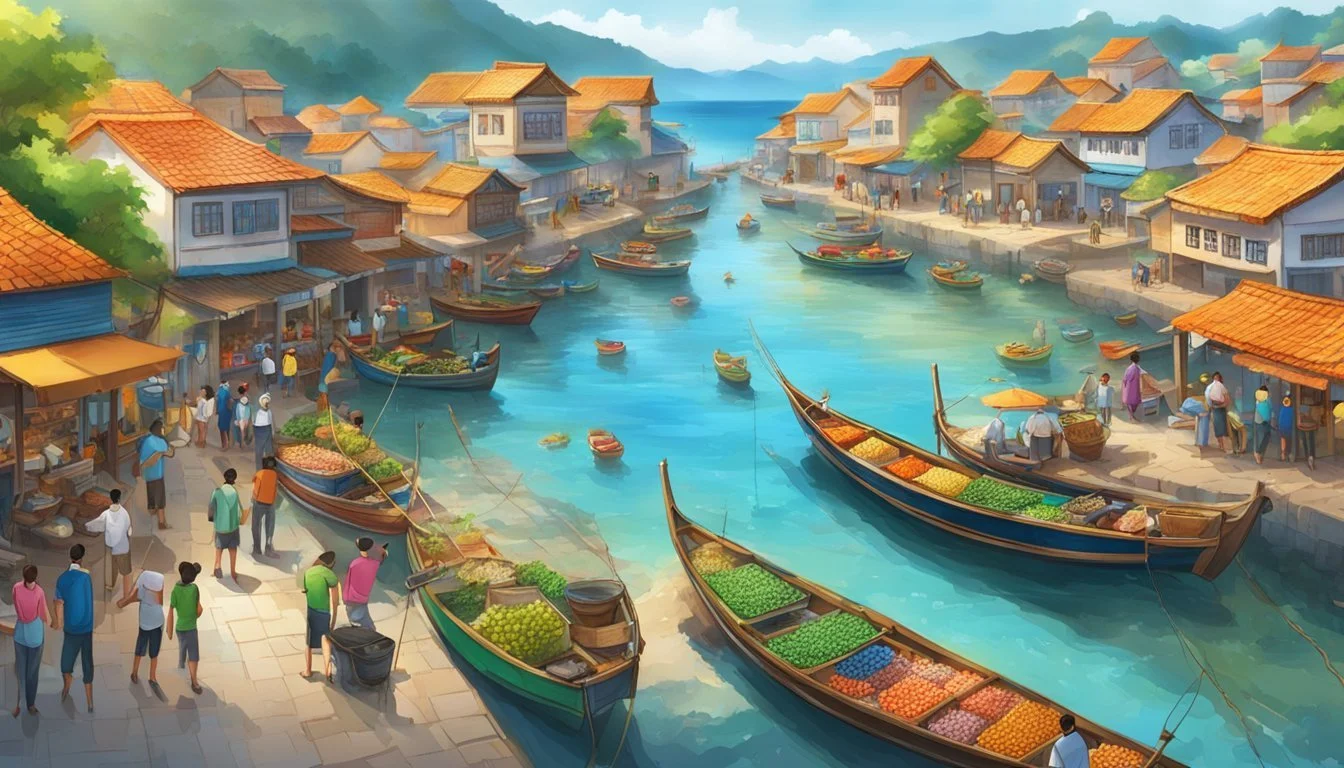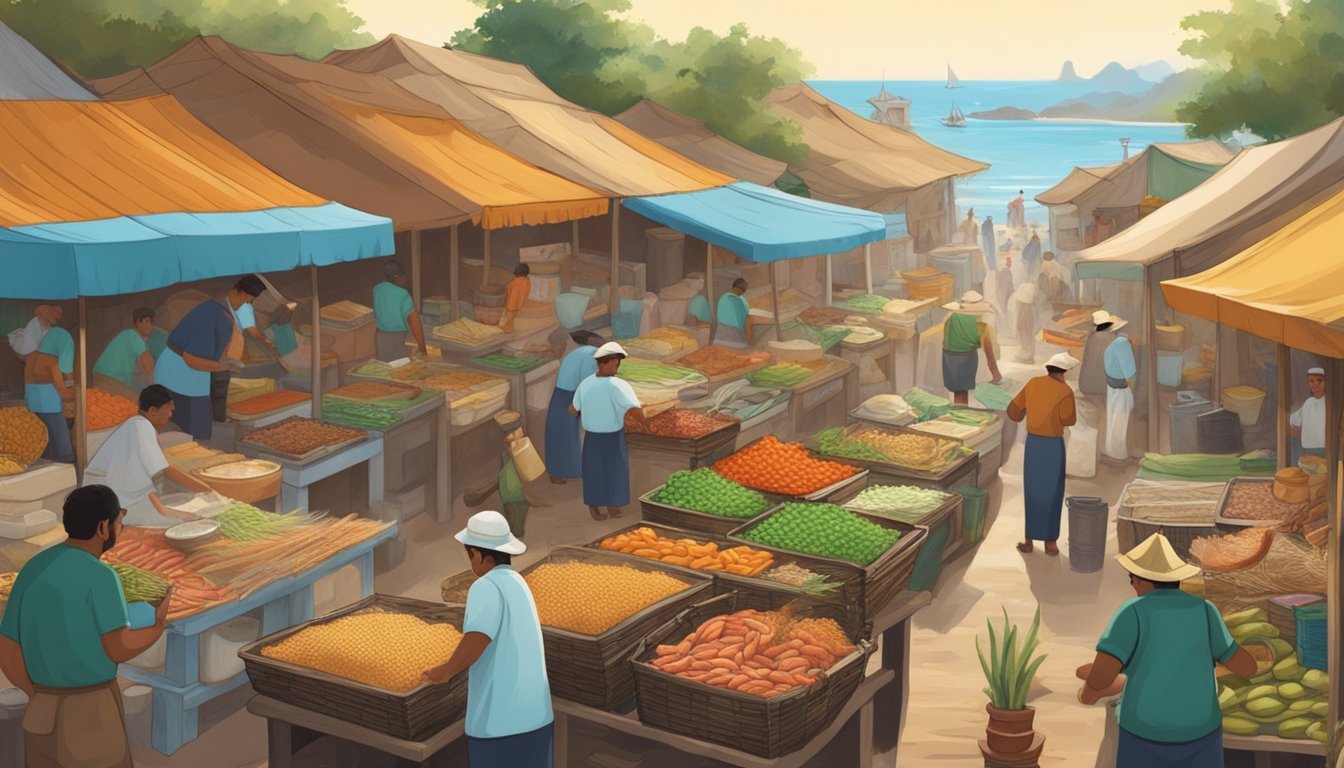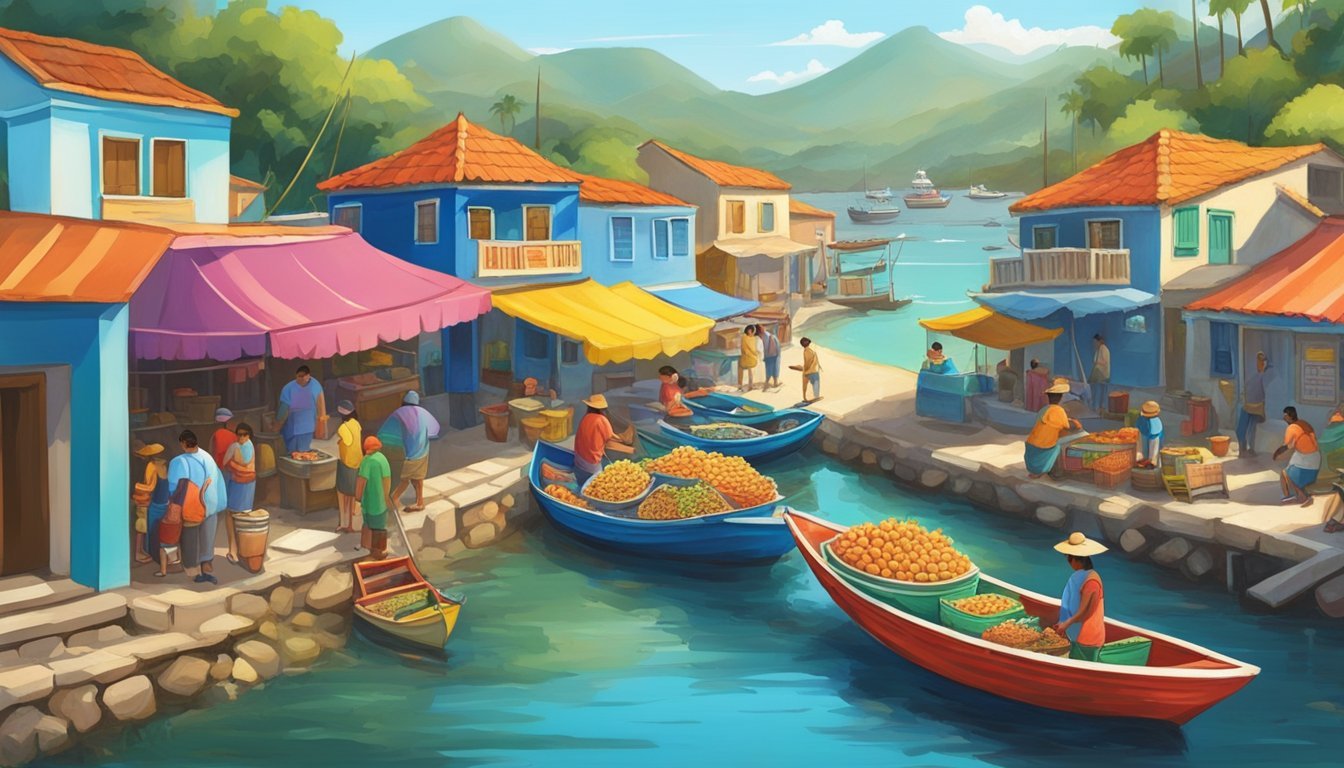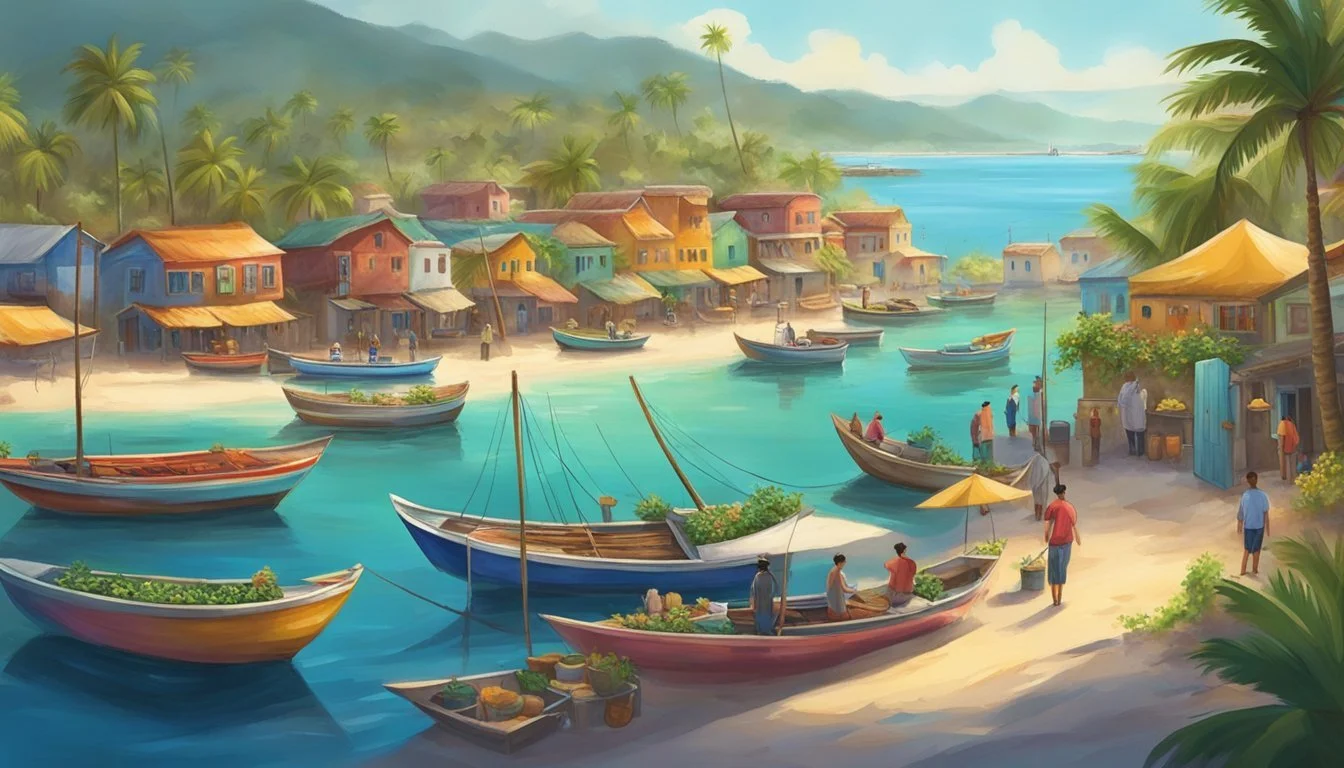The Tacos of the Mexican Fishing Villages
Unveiling Local Culinary Gems
In the heartworn kitchens of Mexico's coastal enclaves, the humble fish taco is an enduring symbol of cultural heritage and maritime bounty. These villages, with their nets teeming with the day's catch, serve as the backdrop for an epicurean tradition that turns simple ingredients into a culinary masterpiece. Local fishermen, market vendors, and family-run taquerias take pride in offering tacos that tell the story of their community's relationship with the ocean.
The preparation of fish (What wine goes well with fish?) tacos in these villages is not merely about nourishing the body but it's a form of content marketing, showcasing local flavors and the freshness of their seafood to visitors and locals alike. Each taco stand, from the roadsides of Baja California to the buzzing markets in La Paz, compete unofficially for the most flavorsome bite, using methods perfected over generations. Crispy batter, succulent fish, zesty toppings, and a warm tortilla combined create a celebration of taste that transcends simple sustenance.
These culinary concoctions often feature regional spins, highlighting the unique taste profiles found across Mexico's diverse coastal regions. It's not just the type of fish that varies – be it snapper, yellowtail, or shrimp – but the combination of spices, the choice of salsa, and even the technique of battering and frying that makes each fish taco a local specialty. The resulting dish is more than the sum of its parts; it's the embodiment of the village's identity, made tangible in one of Mexico's most beloved street foods.
Historical Background
The historical background of tacos in Mexican fishing villages is a narrative of innovation and tradition. It's a tale of local fishers adapting their catch to create a dish that has become synonymous with Mexican cuisine.
Evolution of Fishing Practices
Fishing practices in Mexican coastal villages have a long history of adaptability and resourcefulness. Fishermen have traditionally relied on the rich biodiversity of nearby waters, with an emphasis on sustainable methods to preserve their livelihoods. Fishers in villages often used small boats called "pangas" to venture out into the sea or lake, employing nets to haul in their daily catch, which often included a variety of fish vital to the local economy and cuisine.
The Beginning of Tacos in Coastal Cuisine
Tacos entered coastal Mexican cuisine as an ingenious use of local resources. Fishermen would typically gather the day's catch, utilizing every part of the fish to avoid waste. The coastal communities began incorporating fresh fish into their diet by wrapping grilled or fried fillets in a tortilla, giving rise to what is now known as the fish taco. This culinary creation allowed fishers to easily consume their meals on the go and share a portion of their bounty in a simple, flavorful dish that highlighted the freshness of the local lake and sea harvests.
The Art of Taco Making
Taco making in Mexican fishing villages is a craft honed by generations, blending local ingredients with time-tested techniques to create flavors deeply rooted in coastal traditions.
Ingredient Selection
For a truly authentic fish taco, the selection of fresh, local fish is paramount. Fishermen return to the villages with their haul from the Pacific Ocean or the Gulf of Mexico, offering a variety of fish like snapper, mahi-mahi, or grouper. They follow the rhythm of the tides and the science of sustainable fishing to ensure a fresh supply of the key ingredient.
Fish: Fresh, local catch; sustainable practices
Additional Ingredients: Ripe tomatoes, coriander, red onions, limes for pico de gallo
Cooking Techniques
Once the fish and other fresh ingredients are selected, the cooking techniques come into play. The fish is often either grilled or battered and fried, a method that adds crispness to the tender meat inside. Grilling is preferred for its ability to imbue a smoky flavor that complements the natural taste of the fish. Boats often carry portable grills that make it possible to start the cooking process even before reaching the shore.
Grilling: Preferred on open flames for smoky flavor
Battering and Frying: Adds a crispy texture to the fish
Local Taco Variations
Each village may offer its own variation on the fish taco, with recipes passed down through the years. In areas where fishing is the backbone of the community, one can find tacos with unique toppings such as spicy slaws or mango salsas tailored to the type of fish caught that day. The tacos reflect the diversity of the Mexican coastline and stand as a tribute to the culinary ingenuity of the local people.
Ensenada variation might include beer-battered fish with a creamy slaw.
San Felipe is known for grilling its fish and adding a squeeze of lime to enhance flavor.
Fishing Village Economy
The economic vitality of Mexican fishing villages is fundamentally anchored in the local seafood industry, where fishermen and their daily hauls play a critical role.
Impact on Local Communities
In Mexican fishing villages, the seafood industry is not merely a business—it's a lifeline for the community. Local economies are significantly bolstered by the sale and distribution of fresh catch, including the globally cherished varieties destined for taco fillings. Fishermen, often working in small cooperatives, utilize boats and nets to supply both the domestic market and international entities, channeling crucial financial resources back into their villages. This cycle supports not only direct employment for community members but also stimulates growth in auxiliary sectors such as equipment repair, boat-building, and hospitality.
Fishermen's Livelihood
A fisherman's livelihood centers around the ability to efficiently harness resources from the sea. Employing an array of nets and fishing techniques, they extract a diversity of seafood critical to the village's sustenance and economic stability. Their boats—ranging from small skiffs to larger vessels—serve as their primary tools for navigating and exploiting the rich maritime surroundings. The income generated through the sale of their catch is pivotal, often representing the primary financial inflow that sustains their families and, by extension, the entire village economy.
Culinary Profiles
Mexican fishing villages offer a tapestry of taste, woven from the skilled hands of local chefs and the distinct regional flavors of the sea and land.
Famous Chefs and Eateries
Chef Carlos Valdez at Tatanka is known in La Paz for his remarkable take on fish tacos, helping set the standard for local culinary excellence. Another notable spot, McFisher, has made a name for itself with its delectable cabrilla (white sea bass) fish tacos hugged by warm, soft corn tortillas.
McFisher, La Paz
Taco Specialty: Cabrilla (white sea bass)
Price: $25 Pesos (~$1.40 USD)
Tortillas: Soft corn, warm, favorite amongst patrons
A visit to Puerto Nuevo, famously dubbed "Lobster Village," reveals eateries that turn seafood into celebratory feasts, pairing fried lobster (What wine goes well with lobster?) with traditional sides such as refried beans and rice.
Regional Flavor Influences
Regional flavor influences are deeply rooted in the seaside terrain and local catch. Puerto Nuevo's fried lobster, for example, illustrates the region's preference for rich, hearty seafood dishes, (What wine goes well with seafood dishes?) typically served with a spicy red sauce, butter, and limes to enhance the flavor.
Baja California peninsula adds its own twist to Mexican cuisine, with fish tacos that embody the freshness of the Pacific. Typically, tacos are topped with crunchy slaw, creamy sauces (What wine goes well with creamy sauces?), and a squeeze of lime for an added zing, showcasing an intersection of oceanic bounty and the zest of Mexican culinary tradition.
Taco Toppings in Baja:
Crunchy slaw
Creamy sauces
Squeeze of lime
Sustainability and Conservation
In Mexican fishing villages where the taco culture flourishes, sustainability and conservation efforts are central to maintaining both the culinary tradition and the health of marine ecosystems.
Environmental Initiatives
Environmental initiatives in Mexican fishing villages often involve both local and scientific communities working in tandem. Scientists may help devise management plans aiming to restore and protect habitats that are crucial for marine life, impacting what ends up in the net and, consequently, the taco. Community-led projects might include beach clean-ups to reduce pollution in the lake and ocean areas, ensuring the water quality is suitable for sustaining various fish species.
Sustainable Fishing Methods
Sustainable fishing methods are employed by these villages to protect their staple food sources from overfishing. These techniques include:
Seasonal Fishing: Adhering to specific seasons for catching certain fish species, allowing them time to repopulate.
Gear Restrictions: Using fishing gear that reduces by-catch and avoids capturing juvenile fish and non-target species.
Fish Farms: Developing aquaculture, which can relieve pressure from wild fish populations while providing a steady supply of fish for local consumption.
These practices not only help preserve the delicate balance of marine life but also ensure the long-term viability of the fishing industry and traditional food culture centered around the taco.
Interactive Experiences
Exploring the Mexican fishing villages offers more than picturesque views; it promises a deep dive into the culinary heritage through engaging activities. Visitors can partake in fishing tours led by local fishers or enroll in cooking classes to master the art of taco-making.
Fishing Tours and Workshops
Local fishers offer fishing tours for those interested in the traditional methods of catching seafood. These tours usually include:
Hands-on fishing experience on a boat
Learning to cast nets and lines
Tips on sustainable fishing practices
Insight into the species found in local waters
Workshops may be available onshore, highlighting:
Fish cleaning and filleting techniques
Local fishing history and culture
Environment-friendly fishing resources
Cooking Classes
Cooking classes in Mexican fishing villages are an immersion in flavor and technique. Classes typically cover:
Step-by-step preparation of authentic fish tacos
Proper use of local spices and salsas
Pairing the freshest catch with traditional sides such as rice and beans
Some classes may offer market tours to choose ingredients, teaching visitors how to select the best produce and seafood.
Media Coverage and Trends
The rise of taco fame in Mexican fishing villages is well documented through various media channels, illustrating a trend where traditional cuisine intersects with popular culture to reach a global audience.
Taco Popularity in Media
Taco enthusiasts and food critics frequently highlight Mexican fishing village tacos as culinary delights in blogs and publishing platforms. Articles about taco finds along the Pacific coast of Mexico have appeared in blogs such as Paradise Blogging, often depicting the tranquil beauty of villages like Punta Herrero and the authentic flavors of their fish tacos. Traditional fish tacos have thus become a staple of culinary media coverage, with publishing entities like Issuu hosting magazines and foodie guides dedicated to Mexican cuisine. News outlets have also reported on the phenomenon, adding to the tacos' popularity and encouraging food tourism.
Influencer and Celebrity Endorsements
Celebrity/Influencer Village Mentioned Taco Endorsement - Puerto Nuevo Fried lobster taco celebration - La Paz Advocacy for best fish tacos - Punta Herrero Praise for the unique experience
In recent years, influencers and celebrities have contributed to the trendiness of tacos from Mexican fishing villages by endorsing them on platforms like Instagram or YouTube. These endorsements often lead to spikes in interest and visitation, turning once-quiet locations into vibrant tourist hubs. They celebrate specific dishes such as Puerto Nuevo's fried lobster tacos, lauding them as a cultural and culinary experience. In La Paz, influencers compete to crown the best fish tacos, sustaining the hype and driving continuous attention to the area's food scene.
Conclusion
The rich tapestry of flavors found in the tacos of Mexican fishing villages is deeply intertwined with the local culture and economy.
The Future of Fishing Village Tacos
The longevity of traditional taco recipes remains a testament to their adaptability and the community’s resilience. As long as the villages thrive and the seas provide, one can expect these culinary delights to continue to evolve while respecting their roots. They stand as a beacon for sustainable eating, with the potential for increased awareness around preserving marine life and supporting local fishers.
How You Can Engage With the Culture
For those looking to engage with the fishing village taco culture, consider the following:
Resources: Seek out books or online platforms dedicated to the regional cuisines of Mexico, specifically those highlighting coastal fare.
Tips: When visiting, choose to eat at locally-owned taquerias to directly support the village economy. Engage with the locals to learn about the history and technique behind each taco.
By promoting and partaking in this vibrant aspect of Mexican culinary heritage, one ensures its continuation for generations to come.
About the Author
John is a seasoned content marketing specialist with a deep affinity for culinary exploration, particularly the rich flavors of Mexican coastal cuisine. With over a decade of experience in the content creation industry, John has developed a reputation for crafting engaging, informative articles that resonate with food enthusiasts and casual readers alike.
Dedicated to delivering authentic and accurate information, John conducts thorough research on every topic he writes about. His particular interest in the gastronomy of Mexican fishing villages has taken him on numerous journeys, where he has gathered substantial firsthand experience. Through these travels, John has fostered relationships with local cooks and fishers, unraveling the culinary secrets behind the legendary fish tacos that these seaside communities are known for.
John’s writing is marked by its clarity and precision. He is adept at translating complex culinary experiences into accessible language that effectively educates and entices his readers. His approach to content marketing is one that balances creativity with analytical insights, ensuring that his articles not only captivate but also offer tangible value.
Here are some of John's professional highlights:
Writer and Researcher: Specialized in capturing the essence of regional cuisines.
Marketing Strategist: Developed successful campaigns focused on food and travel sectors.
Traveler and Culinary Enthusiast: Explored various Mexican fishing villages, gaining deep insights into local food traditions.
John’s work garners respect for its neutral tone and reliability, appealing to a broad audience interested in cultural food experiences. His contributions to the culinary content space continue to impact and shape the way people perceive and enjoy the flavors of Mexican coastal towns.









